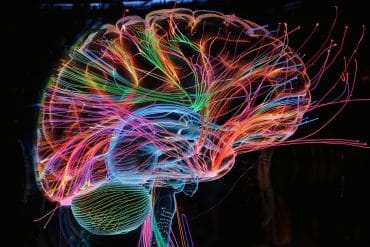Summary: Altered expression of FYN, a gene associated with the production of Tau, was identified in the brains of people addicted to heroin. Findings suggest opioid use can affect the brain in a way that might cause vulnerability in neural systems that can trigger neurodegeneration later in life.
Source: Mount Sinai Hospital
Herion-addicted individuals have alterations in the expression a gene called FYN – a gene known to regulate the production of Tau, a protein that is highly elevated and implicated in neurocognitive disorders like Alzheimer’s disease.
The study emphasizes that opioid use can affect the brain in a way that might increase vulnerability of neural systems that trigger neurodegeneration later in life; however, since these changes are epigenetic (alterations in gene function that are influenced by environmental factors and not alterations of the DNA itself), they are reversible and medications that have already been developed to target FYN for neurodegenerative disorders may be studied as a novel treatment for opioid addiction.
Interestingly, findings were consistent across human, animal and cell models. Through post-mortem analysis of the brains of human heroin users, the team found that, specifically in neurons, the most significantly impaired epigenetic region is related to a gene called FYN. Essentially, heroin “opened up” the DNA at the FYN gene, which encodes a protein called tyrosine kinase FYN, that is strongly linked to synaptic plasticity and which directly results in production of Tau. Too much Tau in the brain is associated with neurodegenerative diseases.
They observed that expression and activity of tyrosine kinase FYN was also induced in rats trained to self-administer heroin and also in primary striatal neurons treated with chronic morphine in vitro. Additionally, they demonstrated that inhibition of the FYN kinase (either via pharmacological means or through genetic manipulation) reduces heroin-seeking and heroin-taking behaviors.
The findings will increase awareness about the potential impact of heroin to alter neural systems related to neurodegenerative disorders. The findings also identify FYN inhibitors as a novel therapeutic treatment for heroin use disorders.
Human brains from a cohort of subjects who succumbed to heroin overdose and normal controls, translational animal model of rats trained to self-administer heroin, and primary striatal neurons treated with chronic morphine in vitro, were used in this study.
The researchers performed unbiased, cell-type-specific, genome-wide profiling of chromatin accessibility, providing insights into epigenetic regulation directly in the brains of heroin-addicted individuals. To assess the causal relationship between heroin use and FYN pathology, they studied the brains of rats trained to self-administer heroin and they hit primary striatal neurons with chronic morphine in petri dishes to examine the effect at the individual cellular level.

By scanning the entire genome of heroin users to identify whether disturbances in how genes are turned on or off exist, Mount Sinai researchers found that heroin opened up the DNA at the FYN gene. The FYN gene is known to regulate the production of Tau, a protein implicated in neurodegenerative disorder like Alzheimer’s disease, meaning that heroin may put users at an increased risk of neurodegenerative disease later in life. Importantly, these novel findings suggest that FYN inhibitors (which have already been developed and are being assessed for use in Alzheimer’s disease) may be promising therapeutic tools for heroin-use disorder.
Said Mount Sinai’s Dr. Yasmin Hurd of the research: “Drug overdoses due to opioid abuse remain at epidemic levels and continue to rise precipitously during the current pandemic, with novel treatments desperately needed. Direct molecular insights into the heroin-addicted human brain are critical to guide future therapies. Our new study findings clearly open up new lines of treatment opportunities for opioid use disorder, which could benefit and potentially save the lives of so many.”
About this neuroscience research article
Source:
Mount Sinai Hospital
Contacts:
Elizabeth Dowling – Mount Sinai Hospital
Image Source:
The image is in the public domain.
Original Research: Open access
“Chromatin accessibility mapping of the striatum identifies tyrosine kinase FYN as a therapeutic target for heroin use disorder” by Gabor Egervari, Diana Akpoyibo, Tanni Rahman, John F. Fullard, James E. Callens, Joseph A. Landry, Annie Ly, Xianxiao Zhou, Noël Warren, Mads E. Hauberg, Gabriel Hoffman, Randy Ellis, Jacqueline-Marie N. Ferland, Michael L. Miller, Eva Keller, Bin Zhang, Panos Roussos & Yasmin L. Hurd. Nature Communications.
Abstract
Chromatin accessibility mapping of the striatum identifies tyrosine kinase FYN as a therapeutic target for heroin use disorder
The current opioid epidemic necessitates a better understanding of human addiction neurobiology to develop efficacious treatment approaches. Here, we perform genome-wide assessment of chromatin accessibility of the human striatum in heroin users and matched controls. Our study reveals distinct neuronal and non-neuronal epigenetic signatures, and identifies a locus in the proximity of the gene encoding tyrosine kinase FYN as the most affected region in neurons. FYN expression, kinase activity and the phosphorylation of its target Tau are increased by heroin use in the post-mortem human striatum, as well as in rats trained to self-administer heroin and primary striatal neurons treated with chronic morphine in vitro. Pharmacological or genetic manipulation of FYN activity significantly attenuates heroin self-administration and responding for drug-paired cues in rodents. Our findings suggest that striatal FYN is an important driver of heroin-related neurodegenerative-like pathology and drug-taking behavior, making FYN a promising therapeutic target for heroin use disorder.







